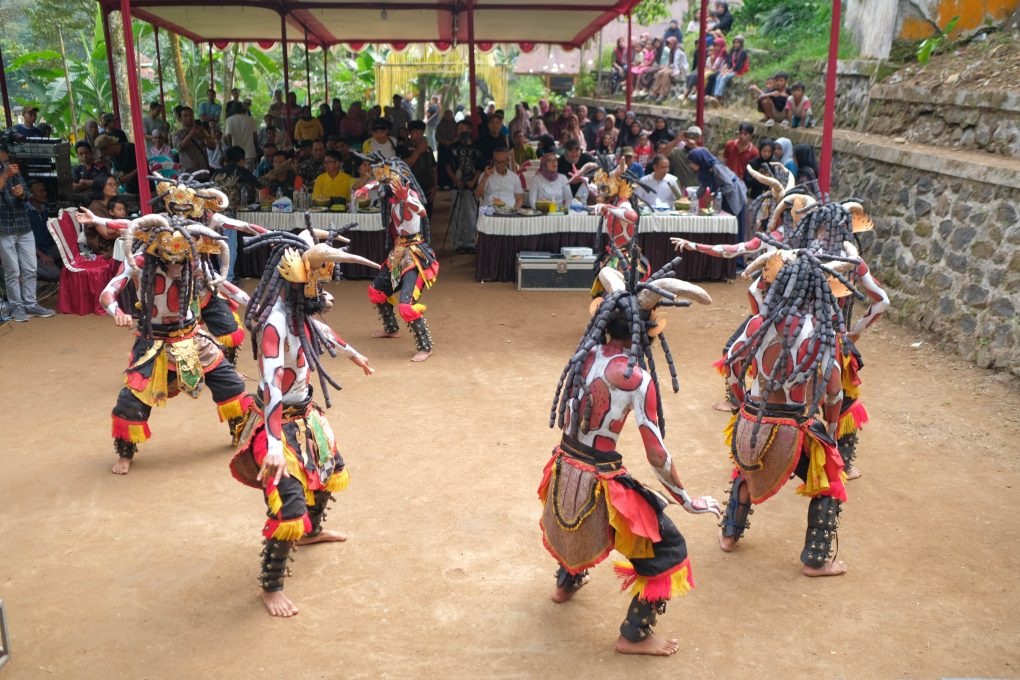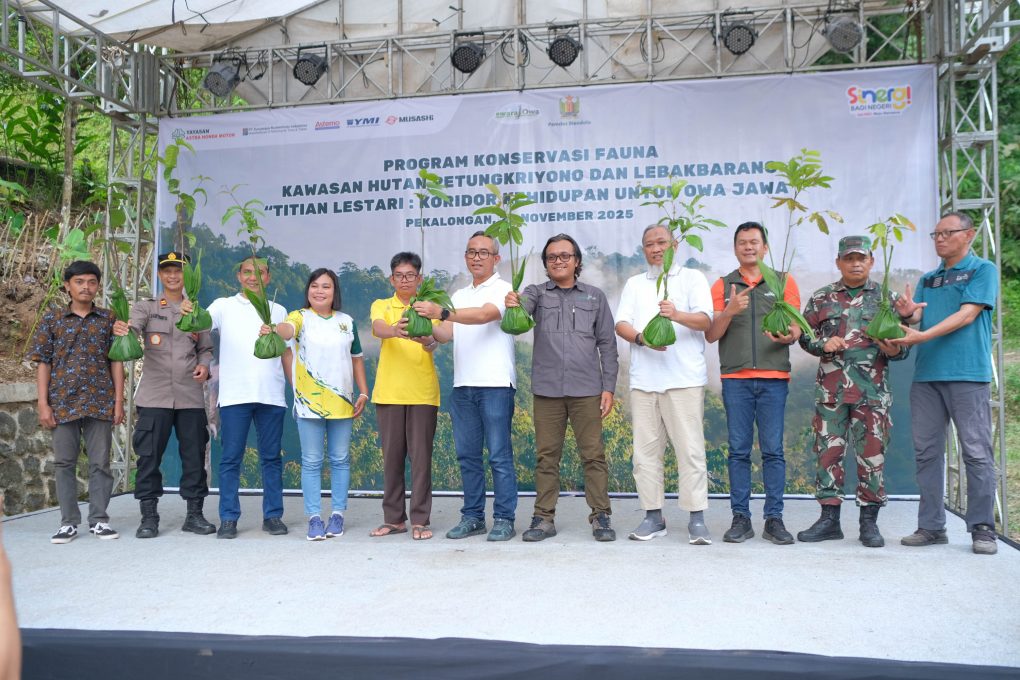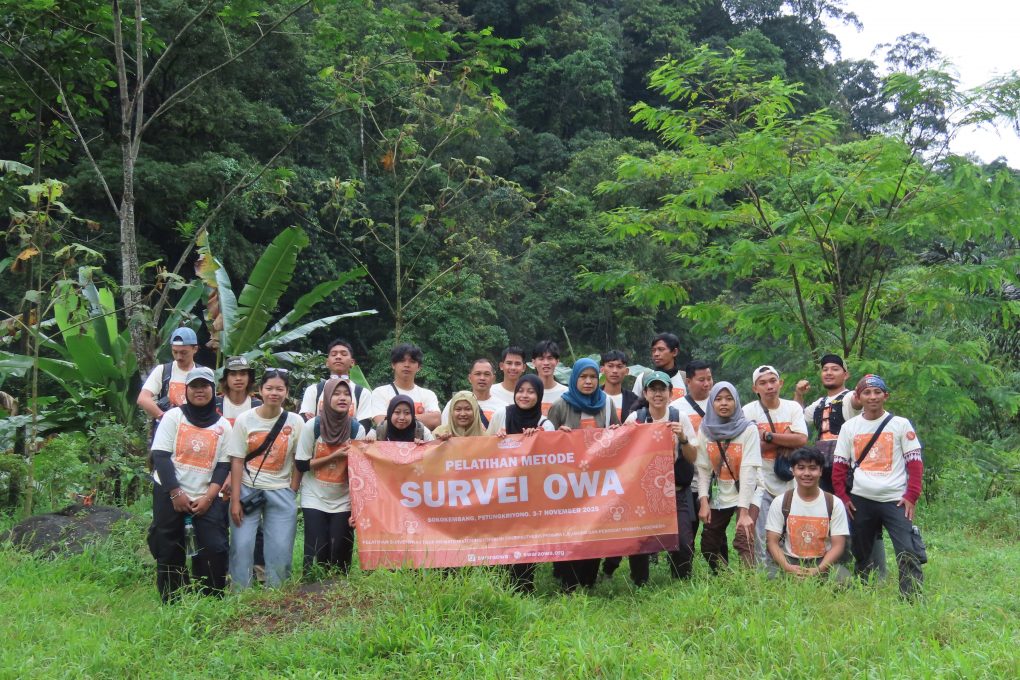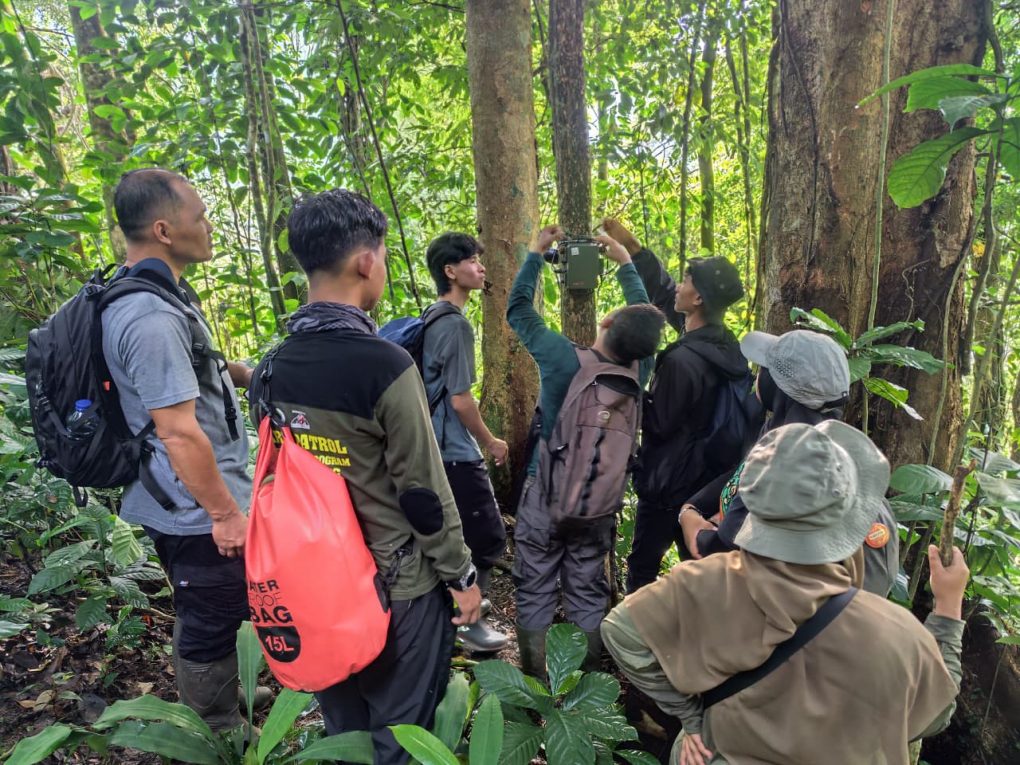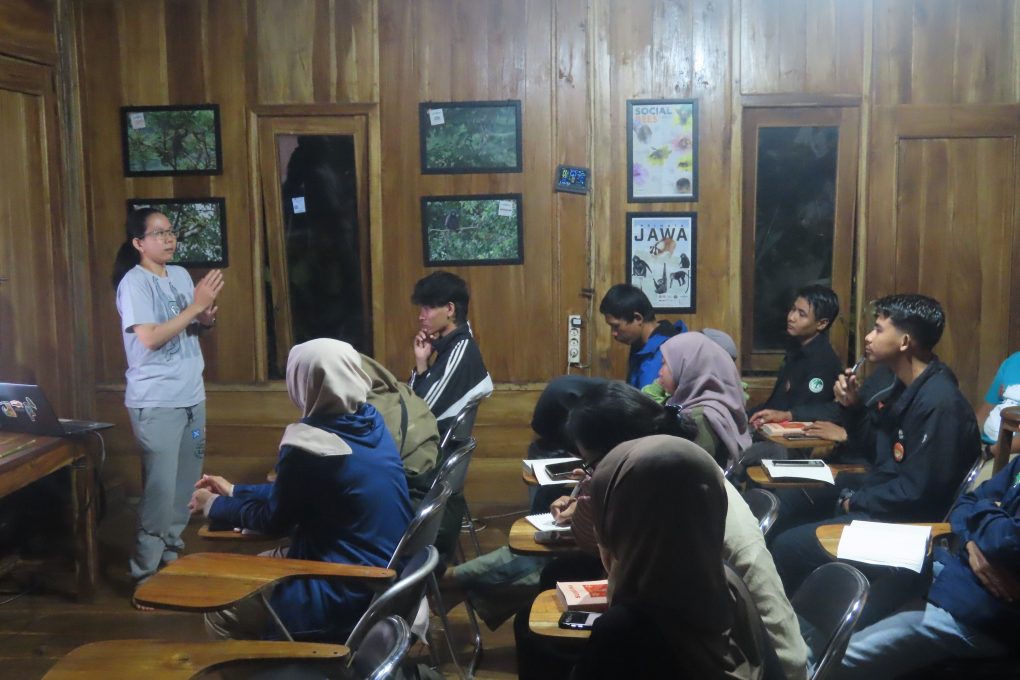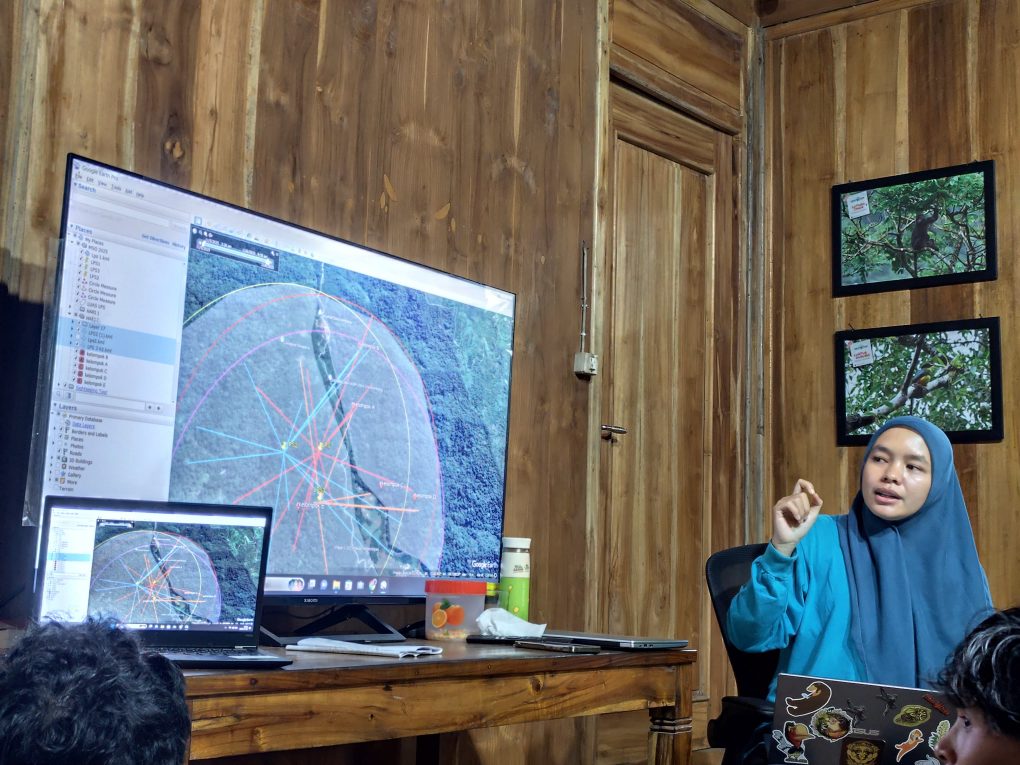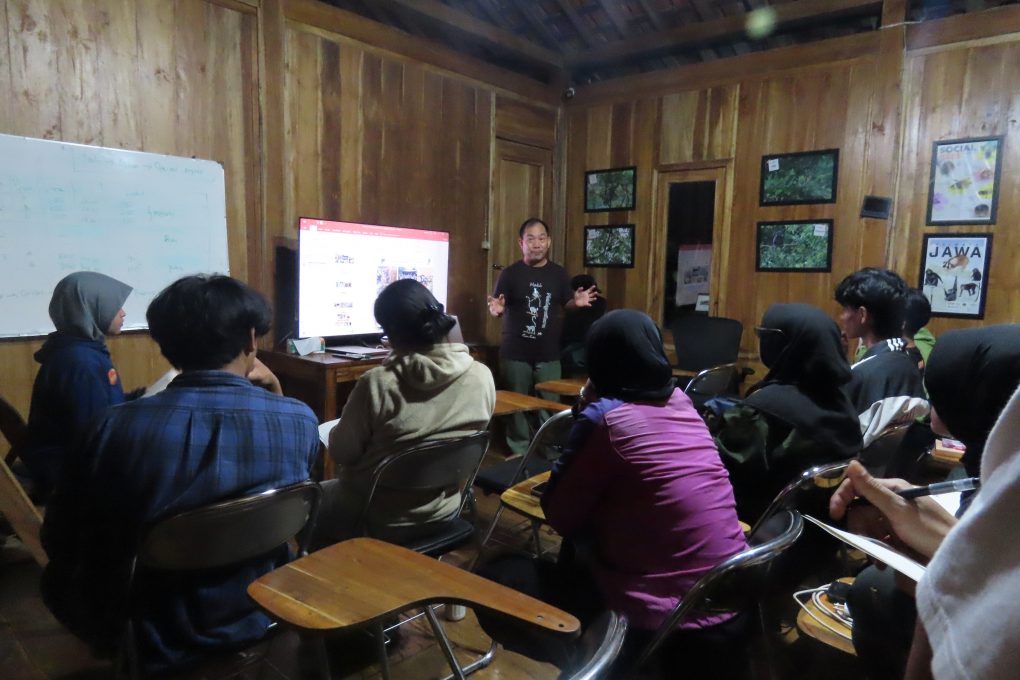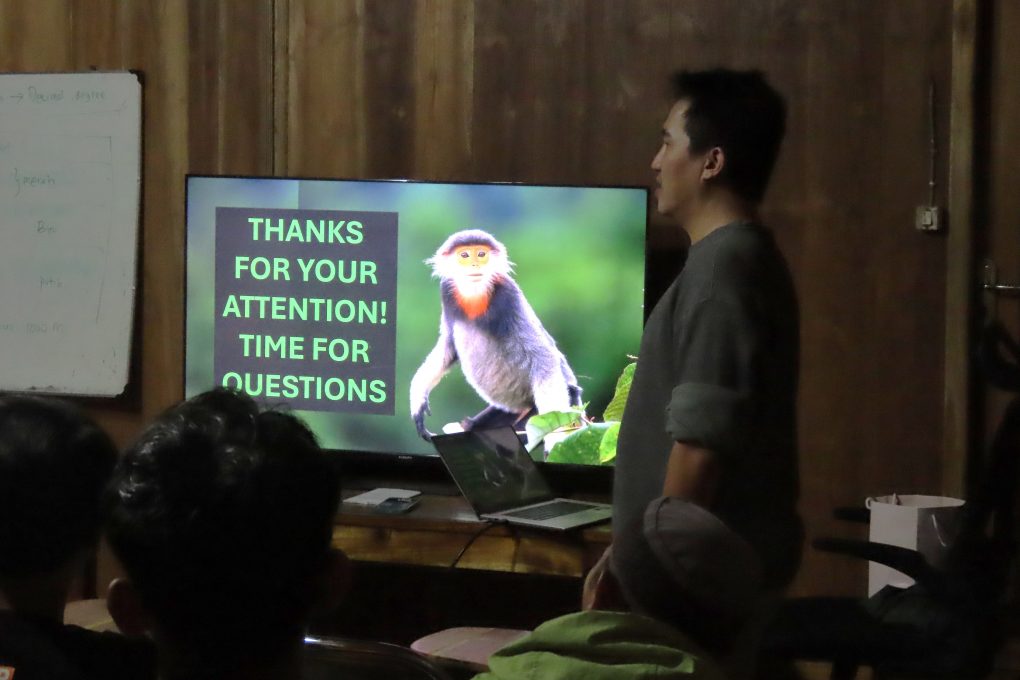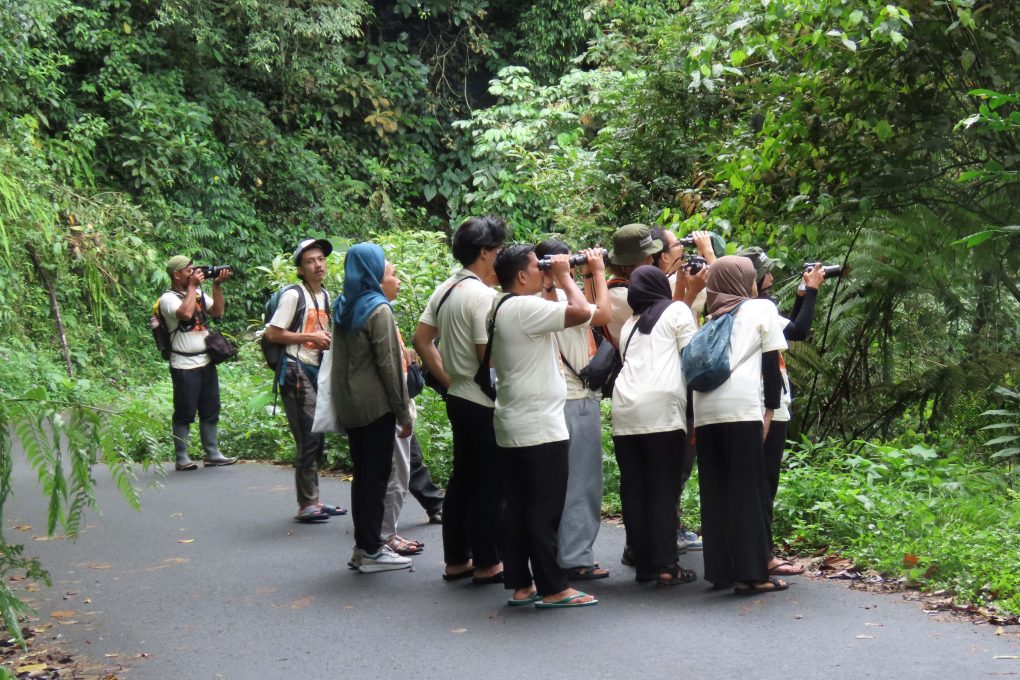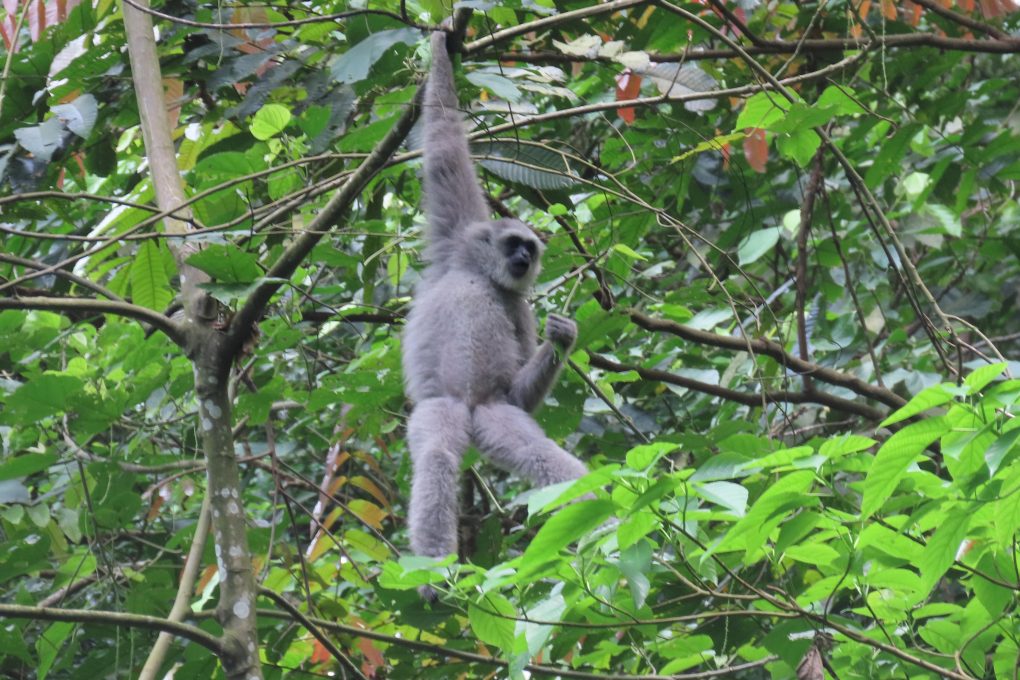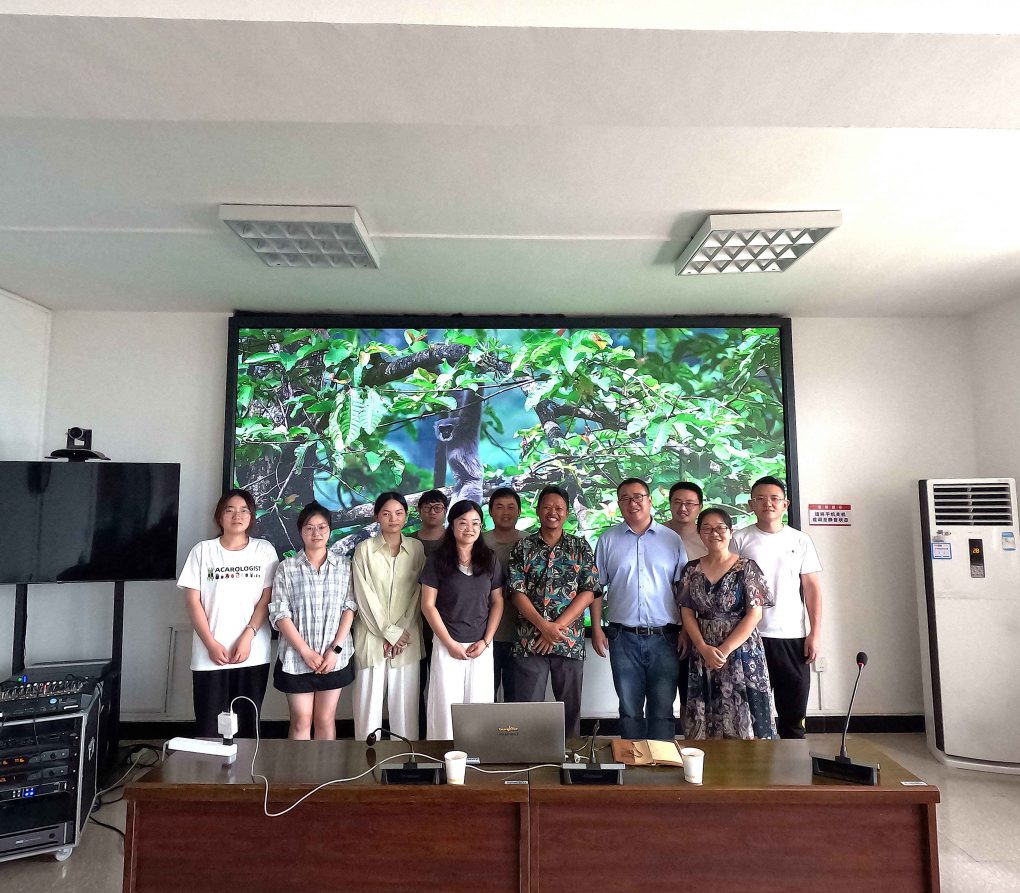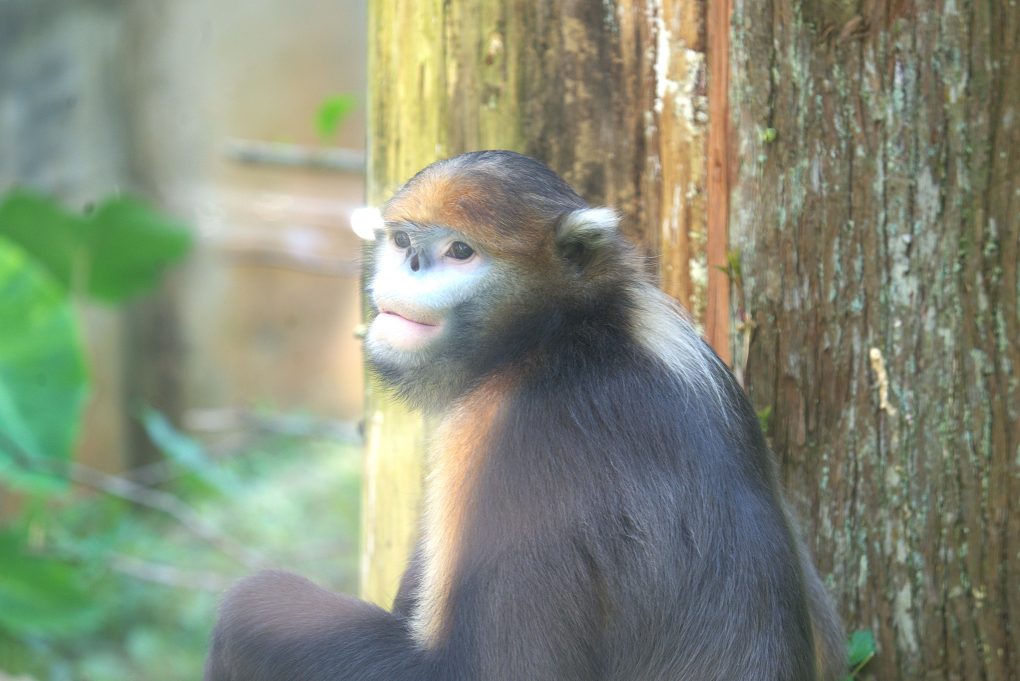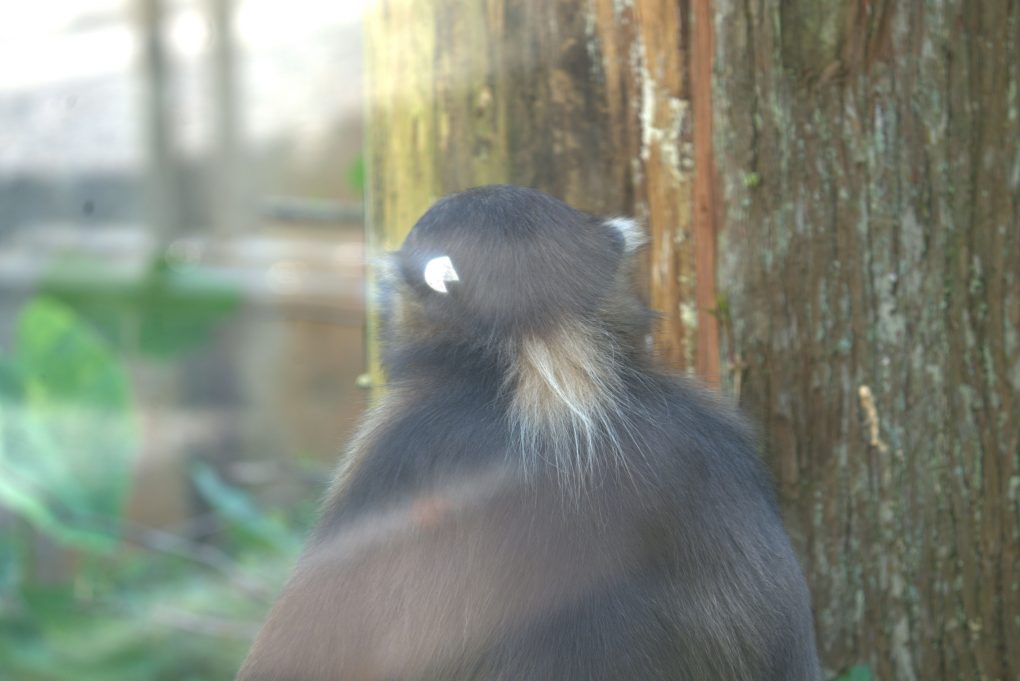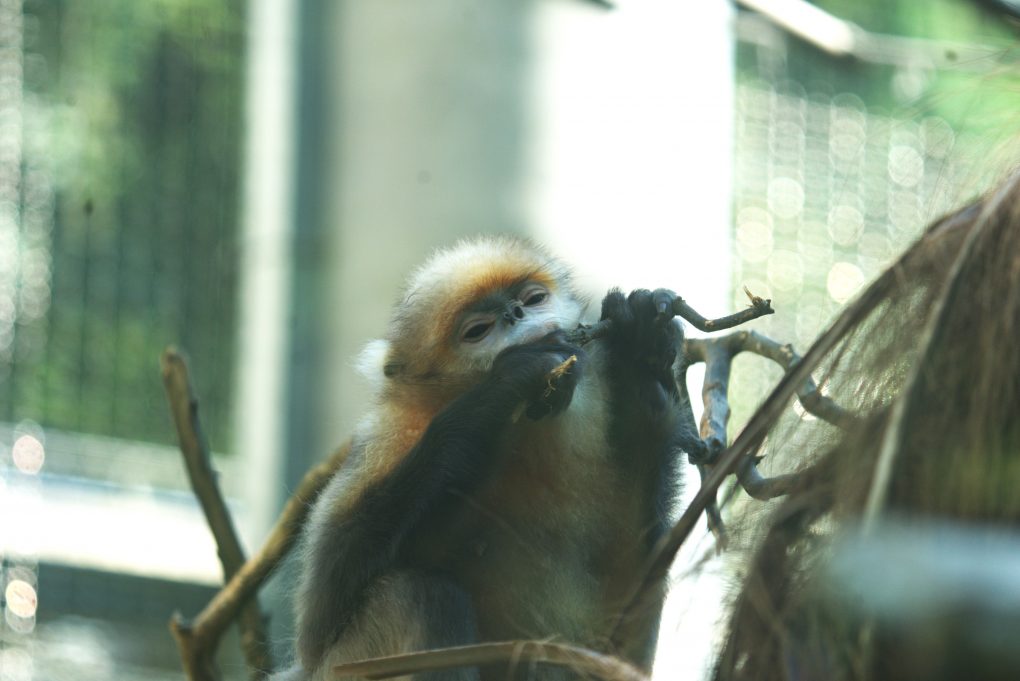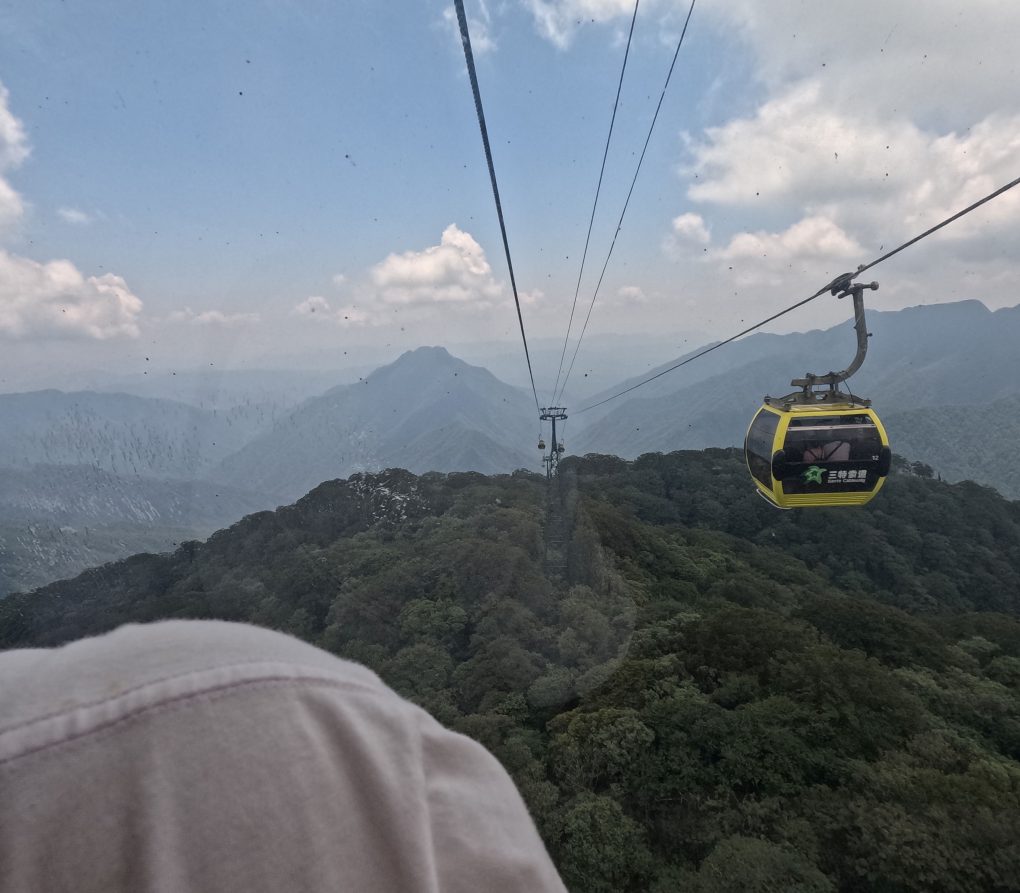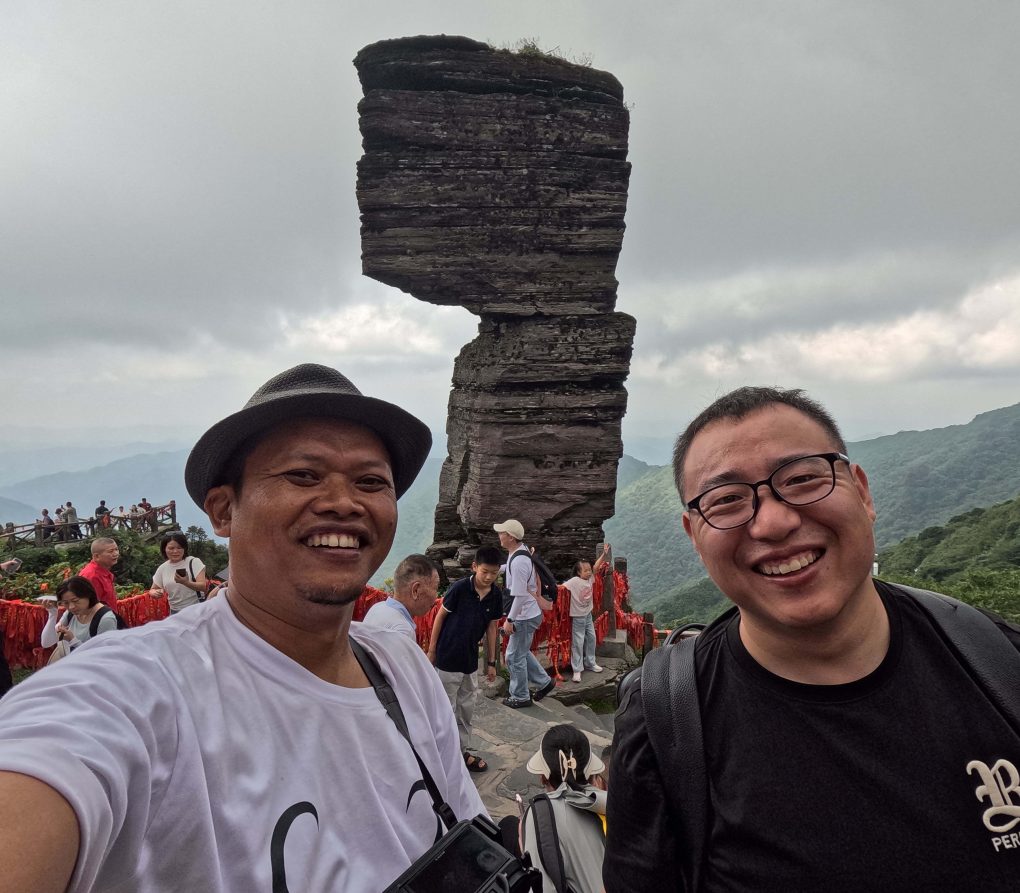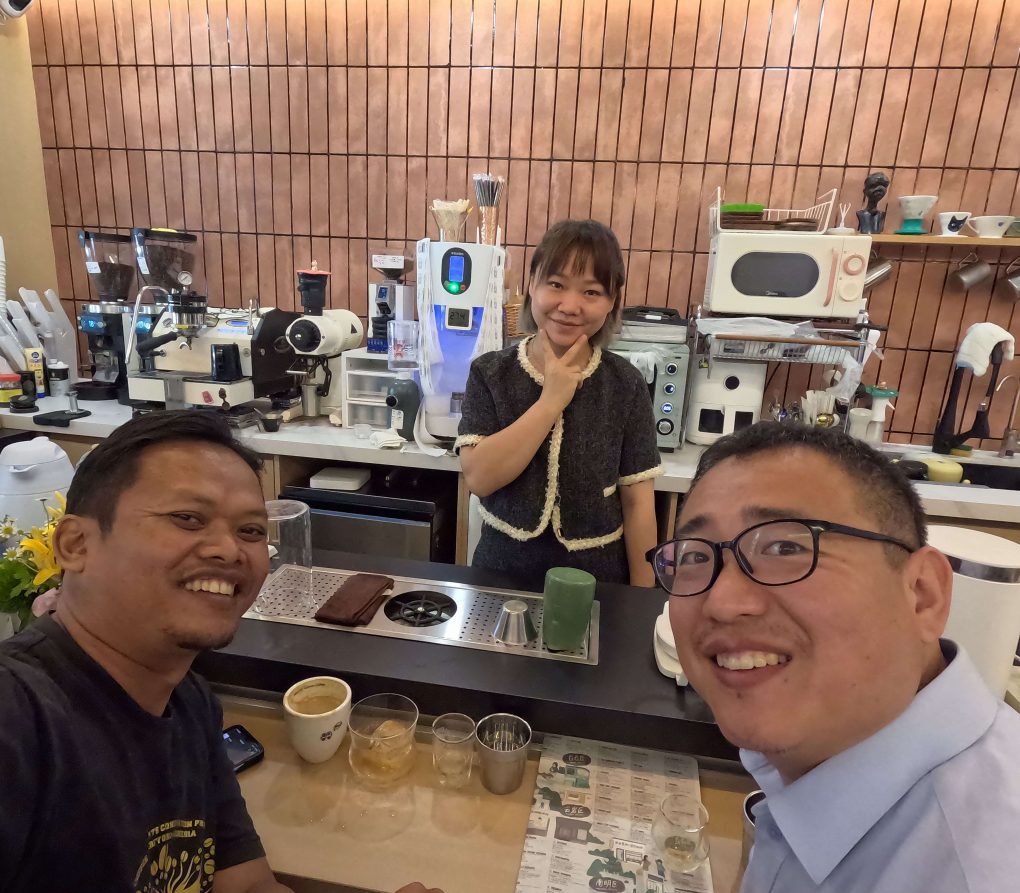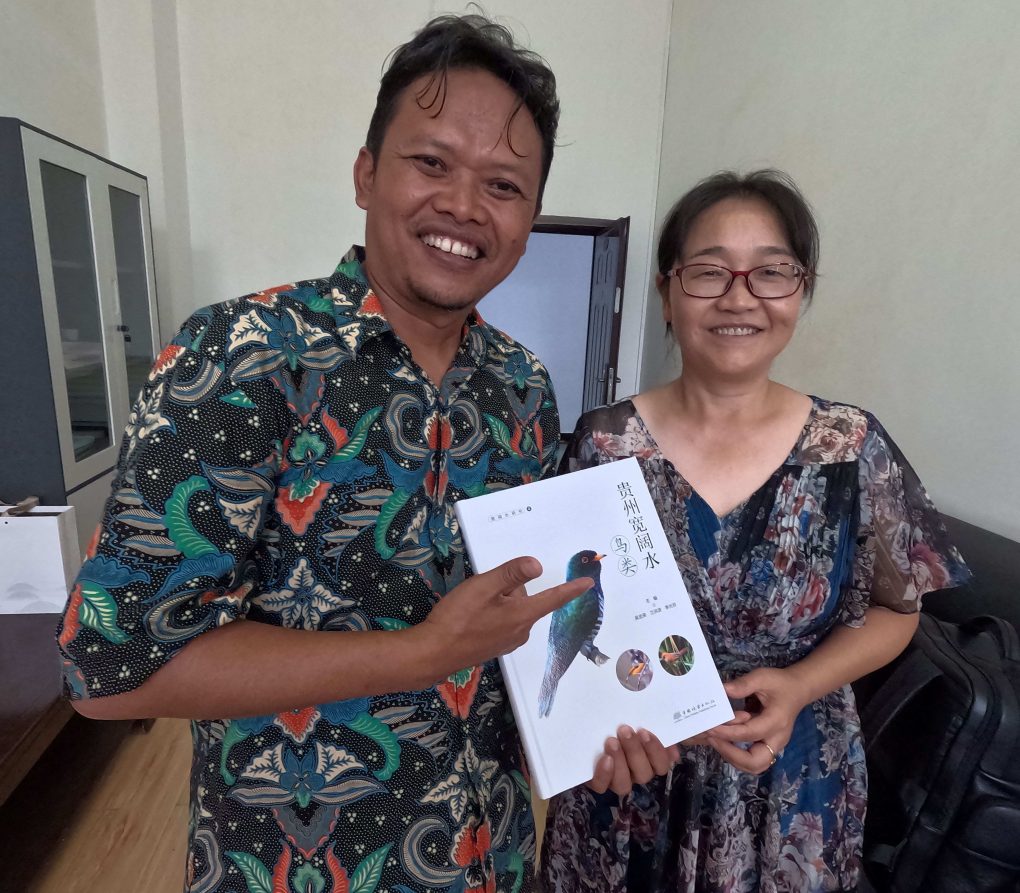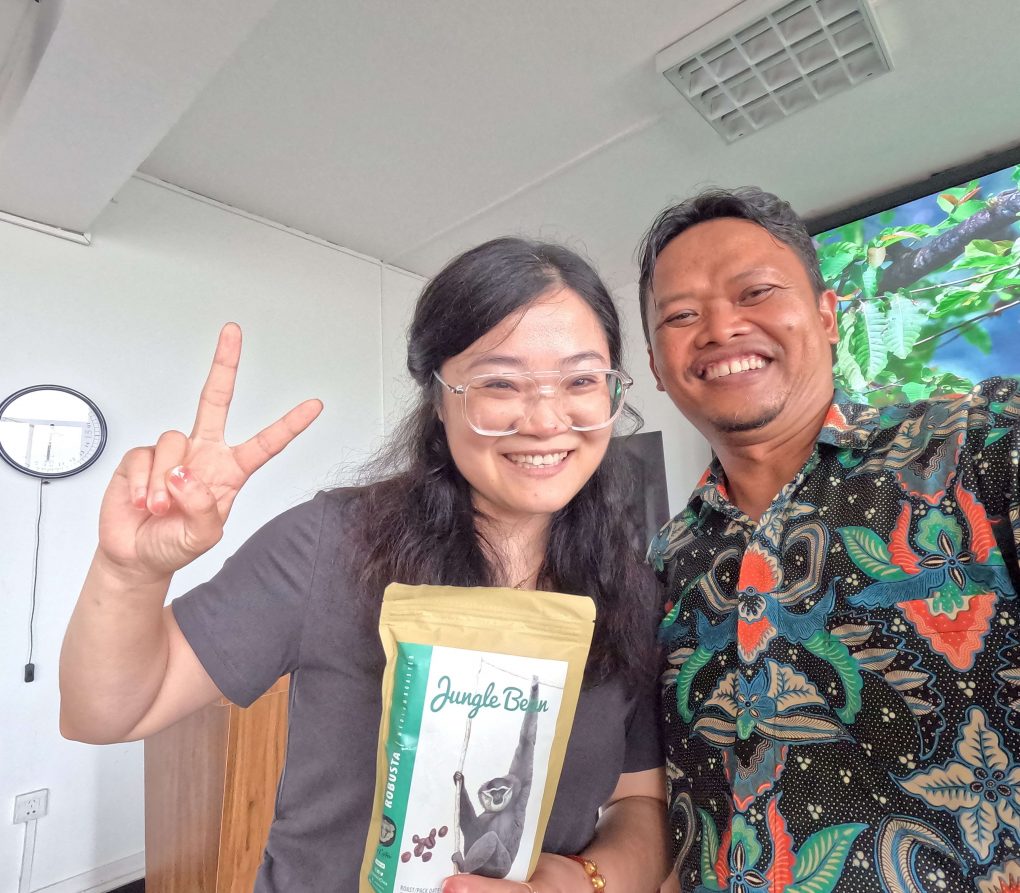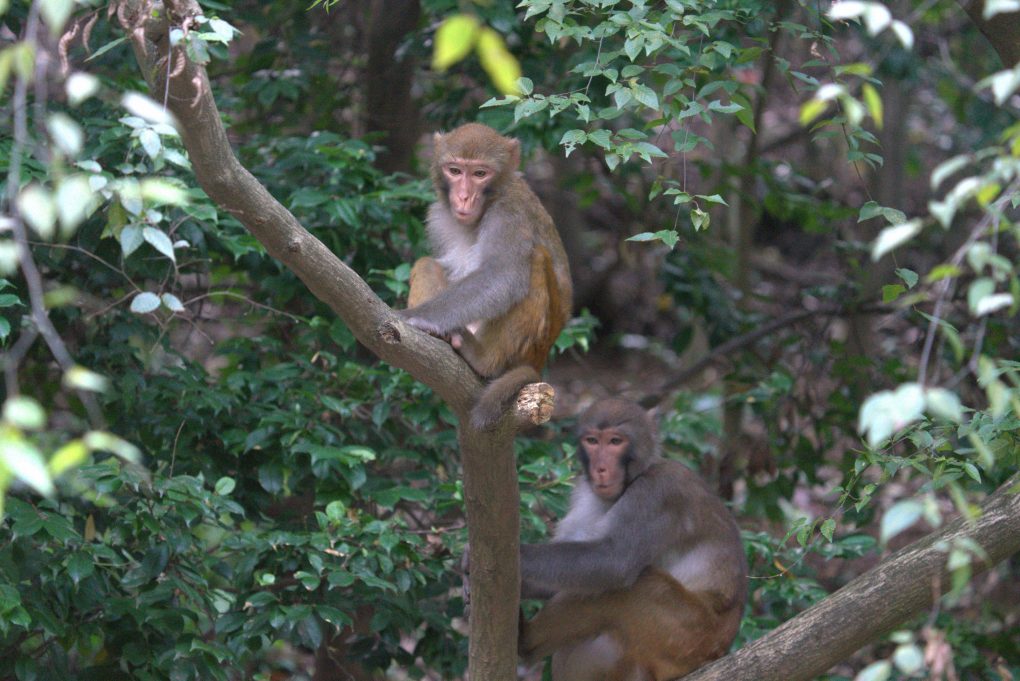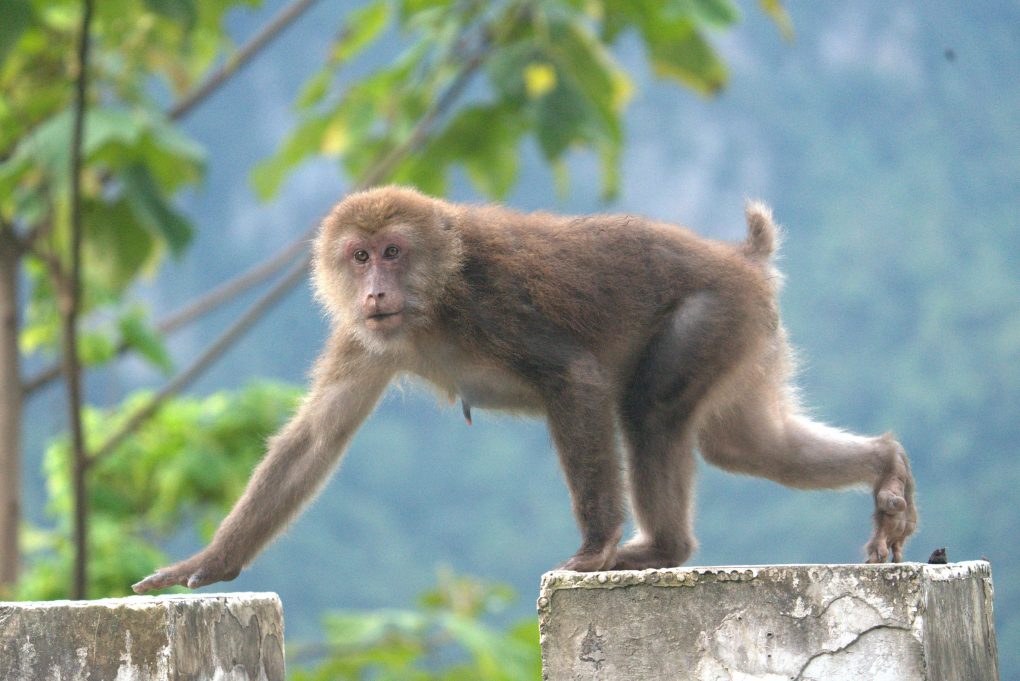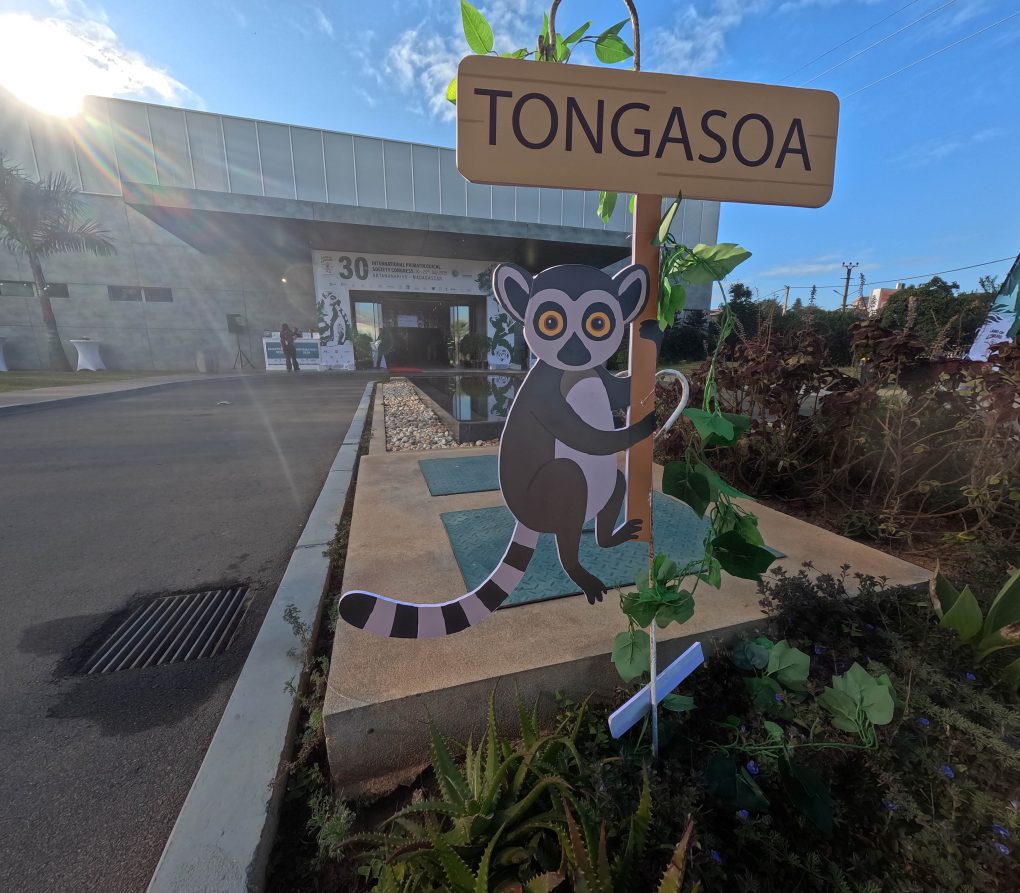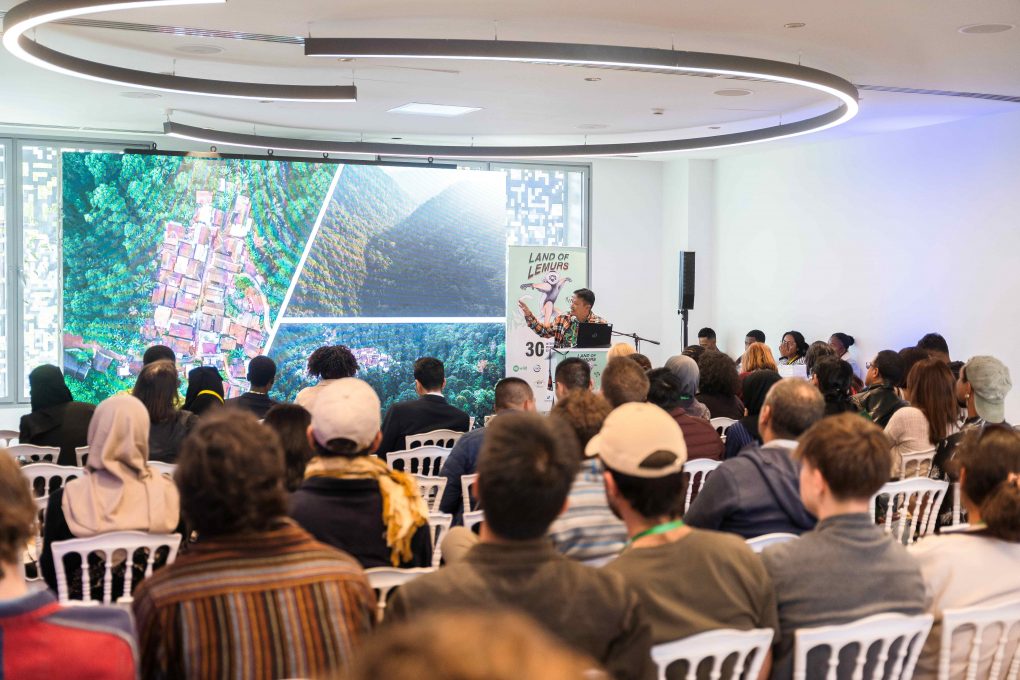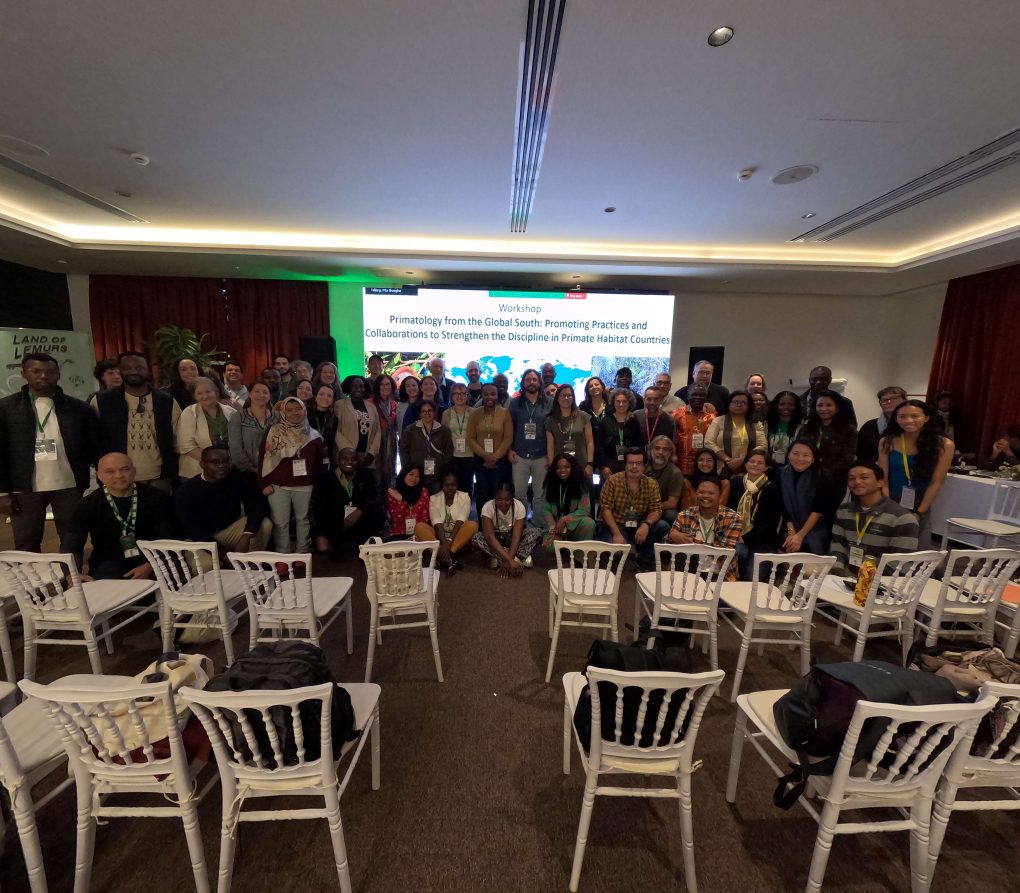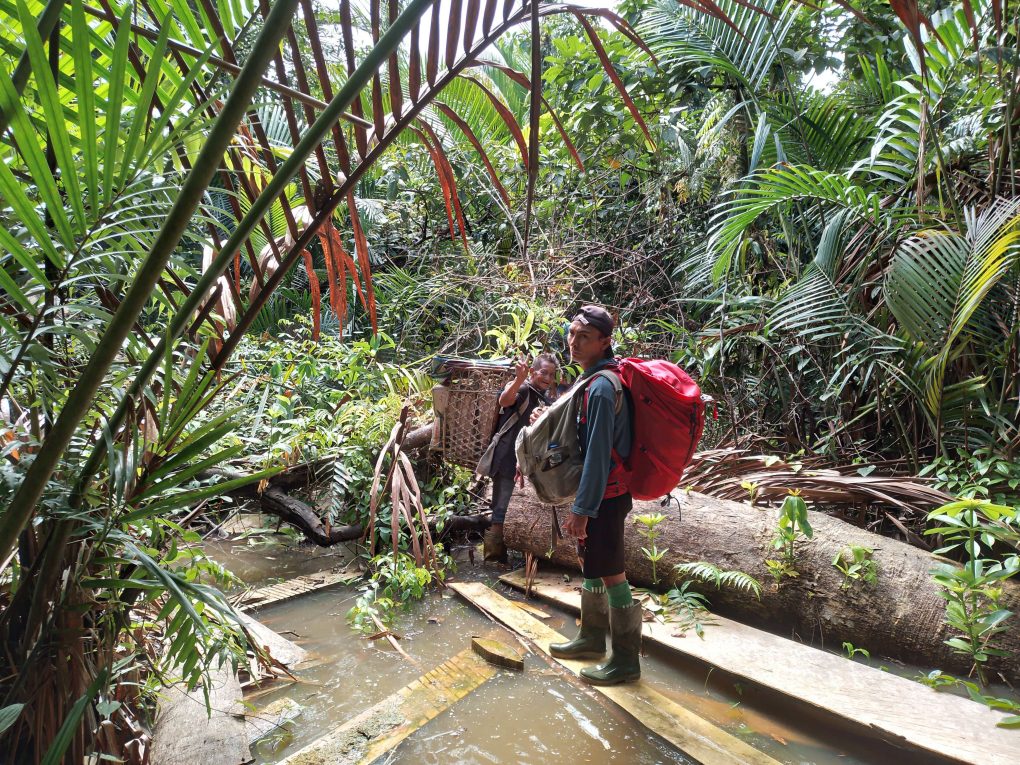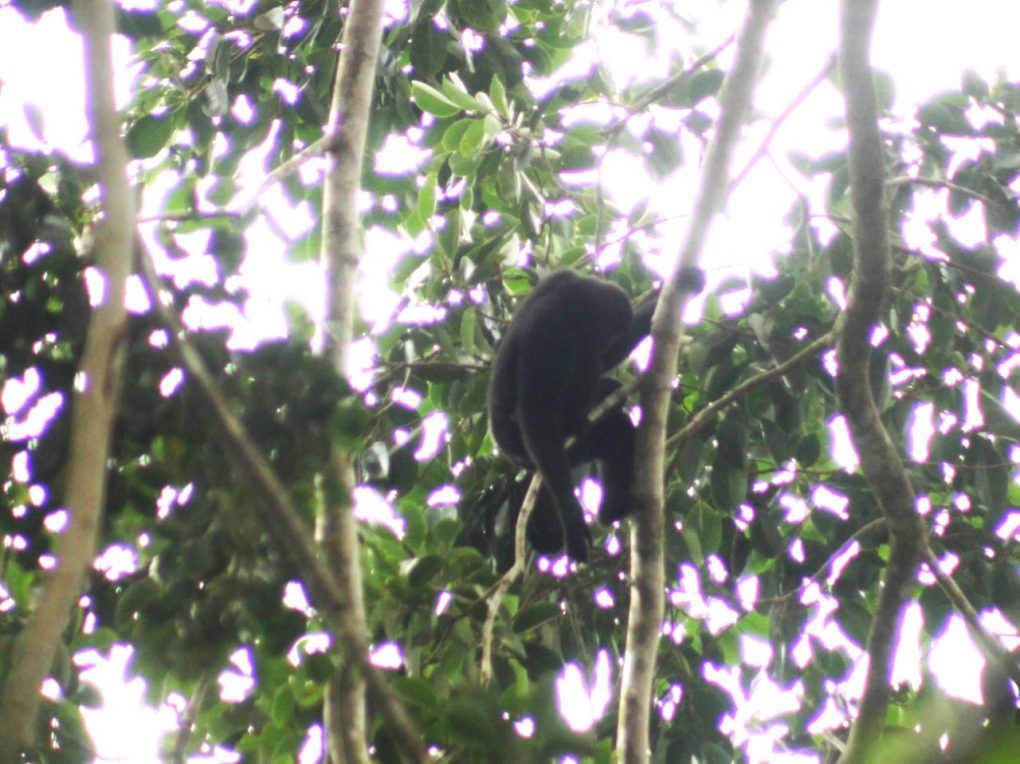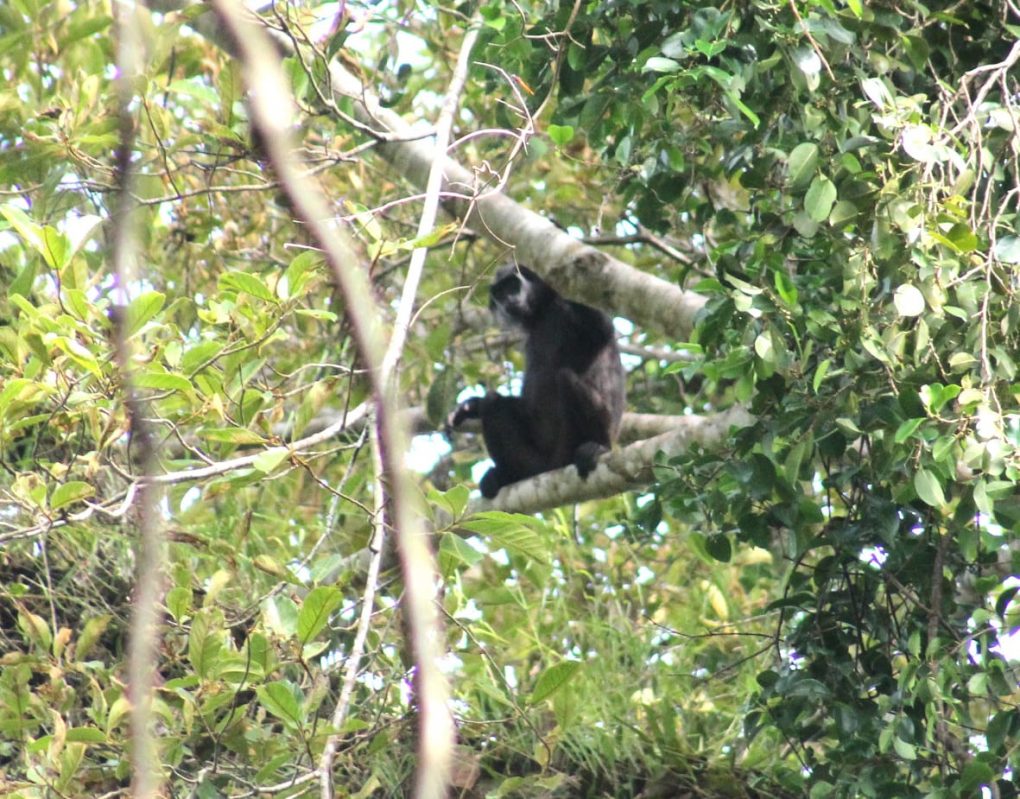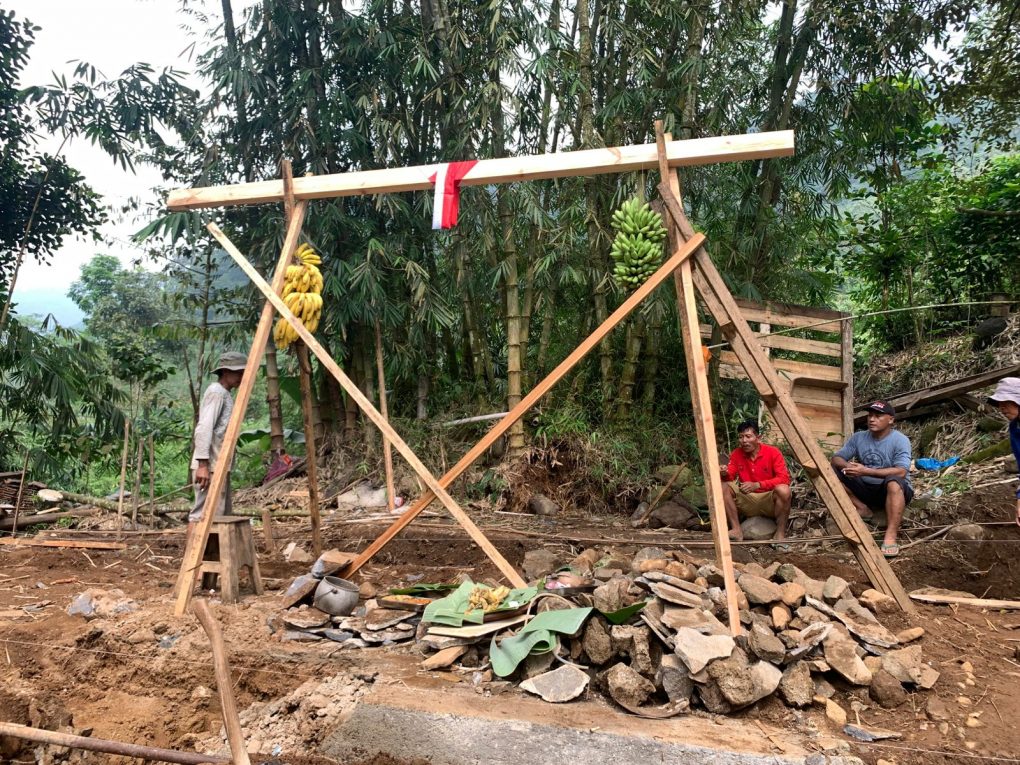by Imam Taufiqurrahman

Mr. Irwan lead group discussion on freshwater fish in Mendolo
Efforts to conserve the blue-banded kingfisher cannot be separated from efforts to preserve the river as its habitat. On that basis, we are SwaraOwa together with the Mendolo Young Farmers Association (PPM) held a River Workshop and Discussion in Sawahan Hamlet, Mendolo Village, Lebakbarang District, April 19-20, 2025.
The two-day workshop and discussion were part of a program supported by the Asian Species Action Partnership (ASAP) and the Oriental Bird Club (OBC). The activity was attended by a total of 13 members of PPM Mendolo.
Themed ” Fish Monitoring, Protecting the Habitat of the Blue-banded Kingfisher”, this activity presented Susilo Irwanjasmoro. Mr. Irwan, as he is familiarly called, is a local fish researcher and river observer. One of the initiators of the Wild Water Indonesia community organization, he began the discussion by sharing his activities. Efforts to preserve rivers and local freshwater fish are actively carried out through movements against illegal fishing and saving local fish species.
Together with the participants, Mr. Irwan tried to unravel the practices related to rivers and fish that have been running in Sawahan Hamlet. What the Sawahan residents did for the Wisnu River felt close and in line with the theme of the movement that Mr. Irwan has been carrying all this time.
The Sawahan residents have a history that they do not want to repeat because it has an impact on the loss of fish in the Wisnu River. In the past, there was a kind of ‘tradition’ of poisoning river or what is commonly called ngobat. A kind of celebration, residents went down to the river in droves to harvest fish and shrimp.
In fact, “We even skipped school,” Rohim recalled, greeted by laughter from other participants.
The prohibited activity was routinely carried out during the dry season, when the river water level receded. Until then, residents realized that the practice was damaging, resulting in the loss of local fishes ragalan or tombro . The loss of ragalan then encouraged them to do re-stocking, the seeds of which were taken from the Sengkarang River.
The success of restoring the ragalan population, made the practice of uncontrolled harvesting happen again. Ragalan almost disappeared for the second time. From that, they, especially the youth, then agreed to make a ban on taking in Kedung Bengang river. The informal ban has now even become an agreement in the community meeting, which is stated in the Hamlet Regulation on fish protection (read: Protection of fish, birds, and primates in Sawahan Hamlet: a new milestone in efforts to preserve wildlife in Mendolo Village https://swaraowa.blogspot.com/2025/03/perlindungan-ikan-burung-dan-primata-di.html).
As for a species of large freshwater shrimp, known to residents as urang sempu, it has really not returned. Mr. Irwan suspects that the species is giant prawn (Macrobrachium rosenbergii).
However, the disappearance of this species of large shrimp must also be seen in a wider scope, considering its unique life cycle. Its living space spans a wide area, from the estuary to the upper reaches of the river. It will spawn in brackish water and will move upstream to grow into adulthood. And so on as a cycle throughout its life.
So, when its existence disappeared from the Wisnu River due to the practice of ngobat, there is actually a natural possibility that the urang sempu will come back. However, when looking at the expanse of the Wisnu River, there is a stretch of flow of more than 24 km to its estuary in the Java Sea. There have been so many obstacles or barriers that have been able to break the migration cycle of this shrimp, both in physical and chemical forms.
The presence of pollution downstream, for example. That is a chemical barrier. Physically, the existence of a dam that is not designed to have a fishway will cause the movement of giant prawns to stop. They will not be able to pass through it, resulting in the urang sempu never returning.

fish monitoring at wisnu river, on 20 April 2025
Fish monitoring
The establishment of a fish sanctuary like that carried out by Sawahan residents for Wisnu river, including the existence of its protection regulations, is an appreciation in itself. However, this process must then be accompanied by routine monitoring.
Awareness and efforts to maintain the possibility of threats from the entry of foreign species need to be a continuous concern. Consideration and the principle of caution regarding the preservation of local fish diversity must be the main consideration. Do not let the practice of enriching fish species occur, but deplete local fish.
From the discussion, it was revealed, for example, the encounter of ragalan in the upper flow. Previously, it had never been found there. The participants suspected that its presence also came from release, not natural factors.
Concerns also arose because its presence could potentially threaten smaller lunjar (Rasbora sp). When the lunjar that is the food for the blue-banded kingfisher disappears, the existence of this endangered bird has the potential to disappear. “What should be done when the practice of releasing fish has been carried out and there is a possibility of impacting the existence of other fish?” asked Cashudi, the head of PPM Mendolo. An expression of concern over the existence of ragalan in the upper stream.
Mr. Irwan suggested that efforts to observe and monitor fish could be focused on the existence of ragalan and lunjar. Routine monitoring will be able to anticipate adverse impacts on the sustainability of the river. If necessary, control and even prevent the population from growing further.
The presence of non-native species of fishes has a real impact. Renny Kurnia Hadiaty in “Diversity and loss of fish species in the lakes of the Cisadane River”, revealed the loss of more than 70% of fish species in the various lakes of the large river. A paper published in 2011 in the Indonesian Journal of Ichthyology, mentions the existence of a total of 86 types of fish.
The species are collected from various previous research in the span of 1920-2000. In every 10 years throughout the period, the rate of loss of existing types is seen. Finally, in the research conducted by Renny, only 24 species were successfully found. Even so, eight of them are non-native species.
Reflecting on that, including the fate of local fish in various other rivers in Java, monitoring efforts have become imperative. Monitoring can also touch many aspects, starting from the river’s physical, biotic, and abiotic aspects. So, early prevention can be done before damage to the river or loss of local fish occurs.
Species documentation
Data collection of local fish is one of the fundamental things to do and should be owned as a basis. A documentation workshop on the species of fish that live in Kali Wisnu was also conducted after the presentation.
According to the participants, there are at least nine species of fishes in Kali Wisnu. Seven of them are local species, namely wader pari or lunjar (Rasbora sp), tombro or ragalan (Tor tambra), bokol (Barbodes binotatus), bogo or kutuk (Channa limbata), kékél (Glypthotorax platypogon), sili (Macrognathus maculatus), and uceng (Nemacheilus sp).

Documenting the species of fish at night and during the day, 19-20 April 2025

Sili (Macrognathus maculatus) Doc. Alex Rifa’i, April 19, 2025.

kékél (Glypthotorax platypogon). Dokumentasi Alex Rifa’i, 19 April 2025
While guppy (Poecilioides reticulatus) and mélem (Osteochilus vittatus) are known as non-native species that were not previously found in Kali Wisnu. There is also tilapia (Oreochromis niloticus) which is invasive, but is not found in the river. That species appears in fish ponds near the river and must be careful not to enter the Kali Vishnu.

Mélem (Osteochilus vittatus), one of the foreign species. Doc. of Restu Wijaya, 20 April 2025.
Documentation begins with sampling. Seven species, namely ragalan, sili, lunjar, are obtained through fishing techniques during the day until the afternoon. After getting permission from Mr. Kasnadi as the Head of RT, who was also present in the meeting, at night they did nyénér ( catching fishs with scoop net) and got kekél from the tributaries, including shrimp and crab. An attempt to catch the uceng was made the next day, but was unsuccessful.

Nyénér and some fishes obtained, April 19, 2025

Ibnu shows the sili fish obtained by fishing rod, April 19, 2025
Mr. Irwan suggested that documentation efforts are not limited only through photography. The richness in local terminology and nomenclature is also important to document, which may very well be different from other regions. Various techniques for taking fish, there are nyénér for example for taking using seser (scoop net or hand held dip net). There is also nggogoh, which is done without using a tool, just by touching the part of the river bed.
There is a name on the fish. Kutuk baby fish, for example, when they are very small are called lenthis and when they are the size of a thumb they are called licing. While ragalan baby fish, known as kemprung. The same is true of the stories or myths that many Sawahan residents have. Its existence needs documentation because of its nature which is still in the form of speech from generation to generation.
Fish watching
The existence of protection for fish and the river that has been running in Kali Wisnu, plus the wealth of local fish species has great potential to develop fish watching. When you usually see fish in the river only from above the surface, fish watching offers the sensation of seeing fish while swimming. It’s like snorkeling, but done in a shallow river.

Ragalan ( Tor tambra) in Kedung Kali Bengang, Wisnu River
Mr. Irwan shared his experience in developing the fish watching tour in the Oyo River. Participants are provided with modules of various species of fishes that can be baited, then together they search and observe them equipped with snorkeling goggles. A different way in an effort to introduce the diversity of local fishes, while also inviting people to care more about its sustainability.
Planning is very necessary and should be the main concern in developing this special interest ecotourism. Various stages as prerequisites need to be studied in depth, tested. Starting from preparing locations, lanes, which should prioritize security and safety. The existence of supporting facilities and infrastructure, visitation systems, institution management, packages, standards operational procedure, and much more.
This river workshop open up insight into the existence of the river as a complex living system. Even from a discussion about the existence of fish and shrimp, the conversation spanned from the headwaters of the Wisnu River to its flow in the estuary.
The existence of fish and rivers are inseparable from the surrounding environment. It is also closely related to human activities that live around. So, its existence needs to be maintained, as a space that many living beings, including humans, depend on it.
